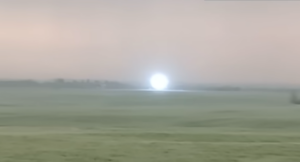The Aircrew and their patient(s) are in the air to Rothera
12:10 UTC, June 22, National Science Foundation update (half hour ago):
The Twin Otter aircraft flying an Antarctic medical-evacuation mission has left the National Science Foundation’s Amundsen-Scott South Pole Station en route to the British Antarctic Survey’s Rothera Station.
[No indication how many patients are on the plane.]
Patients:
Previous report: It is possible that the evacuation flight will bring a second patient out of Antarctica. That decision still is pending, reported the NSF, two days ago.
After comprehensive consultation with outside medical professionals, agency officials previously decided that a medical situation at Amundsen-Scott warrants returning one member of the station’s winter crew to a hospital that can provide a level of medical care that is unavailable at the station.
That patient is seasonally employed through the Lockheed Martin Antarctic Support Contract, the prime contract for operations and research support contractor to NSF for the United States Antarctic Program (USAP). NSF is not releasing any further personal or medical information to preserve patient privacy.
Background:
The Kenn Borek Air Twin Otters that left Calgary (Canada) on June14 to attempt a medical evacuation at the Geographic South Pole (90ºS). They arrived at The British Antarctic Science Base, Rothera, on June 20, where they were fitted with skis to land on snow and ice.
The aircrew took advantage of a favorable weather window to leave at approximately 8AM on June 21 and arrived at the South Pole Station safely later in the day. The other plane will remain at Rothera to provide search-and-rescue capability, as needed.
It currently is mid-winter in Antarctica. Normally, flights in and out of Amundsen-Scott South Pole Station are not planned between February and October due to the extreme cold and darkness.
Kenn Borek, however, has the experience of flying two similar medical evacuation flights — one in 2001 and another in 2003.
The Twin Otter aircraft that Kenn Borek flies are able to operate in extremely low temperatures and are able to land on skis. As there is no tarmac runway at the South Pole, the aircraft must land in total darkness on compacted snow.
Because of the complexity of the operation, the evacuation will require contributions from multiple entities involved in the U.S. Antarctic Program including weather forecasts from the U.S. Navy’s Space and Naval Warfare Systems (SPAWAR) Center Atlantic; expertise from the University of Texas Medical Branch; and various contributions from ASC, NSF’s Colorado-based Antarctic logistics contractor as well as assistance from other nations.
Amundsen-Scott is one of three year-round stations NSF operates in Antarctica in its role as manager the U.S. Antarctic Program, the nation’s research program on the southernmost continent.
There are 48 people wintering at Amundsen-Scott, performing a variety of tasks related to station maintenance and science. These include overseeing long-term monitoring of the atmosphere and its constituent gases — such as methane and carbon dioxide — and scientific observations by two radio telescopes; the 10-meter South Pole Telescope and the BiCEP2 telescope, which are using the Cosmic Microwave Background to investigate the early history of the universe, including investigations of dark energy and dark matter that makes up most of the cosmos. Also included is the Ice Cube Neutrino Observatory, which is designed to observe subatomic particles, produced by some of the most violent and exotic cosmic phenomena, including black holes.
Previous/Related
Kenn Borek plane in the air, and landed at the South Pole
Ken Borek Air South Pole Rescue at Punta Arenas and Rothera
Kenn Borek South Pole Evacuation Flight Launched
Midwinter living on the edge: ExWeb interview with Sven Lidstrom at the South Pole
National Science Foundation News
#polar #antarctica #southpole #kennborek #medicalevacuation






